Pigment inks are sensitive to frost and are not simple dye solutions
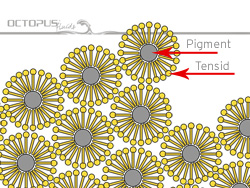
Pigment ink is not just a simple dye solution, but a highly complex mixture of liquid (solvent) and solid (pigment) components. To prevent the solid components from sinking to the bottom, as in the case of a sand-water mixture, they have to be ground very small (about 50 nm, or 50 millionths of a millimeter) and the ink has to be carefully balanced. On the one hand, the difference in density between pigment and solvent should be small, and on the other, auxiliary substances ("surfactants") are used that form spherical structures in solution (known as spherical micelles) that enclose the pigment particles and keep them in suspension.
The finished ink is then in a very delicate equilibrium. With the natural aging of the ink, this equilibrium is disturbed and the pigment particles sink to the bottom. Now, this process can be accelerated by diluting the ink with water or alcohol, for example. Likewise, changes in pH are harmful to the ink. But large temperature fluctuations also lead to flocculation, so pigment ink must not be frozen or "shocked" by excessively low (from about 5°C) or high (from about 50°C) temperatures. This aging cannot be reversed, i.e. the ink cannot be made functional again by shaking or vigorous stirring, for example. This is due to the fact that many particles (pigments) have accumulated, which can sink again and again or even block the print head of your printer.
For your safety, we therefore no longer deliver pigment inks or articles containing pigment inks at extremely low outside temperatures. The advantage for you is that the pigments in the inks of our Octopus Fluids do not arrive already clumped. You will always receive a high-quality product from Octopus Fluids GmbH & Co. KG.
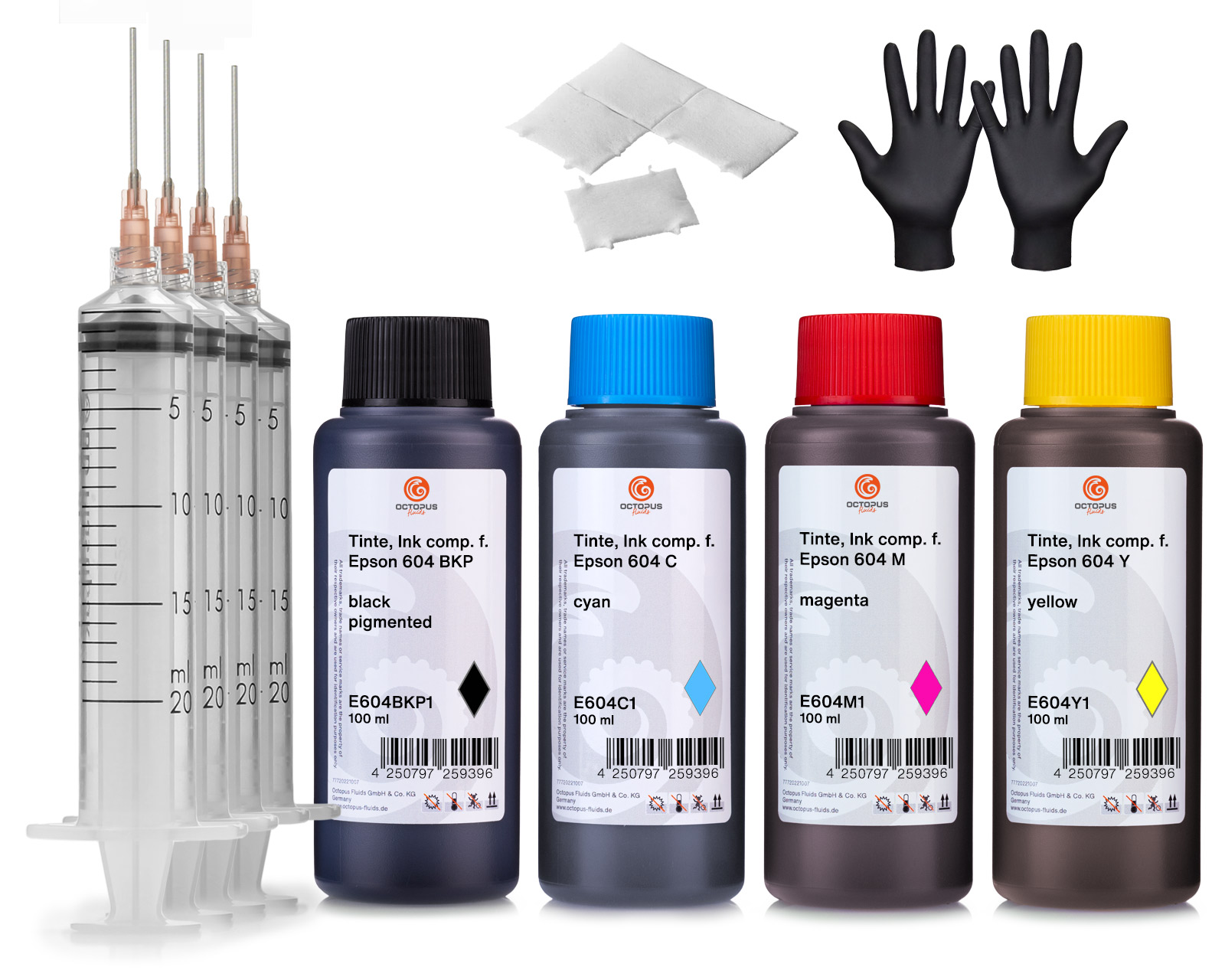 Octopus printer ink set compatible for Epson 604 ink cartridges, WorkForce 2950DWF 2930DWF
Octopus printer ink set compatible for Epson 604 ink cartridges, WorkForce 2950DWF 2930DWF
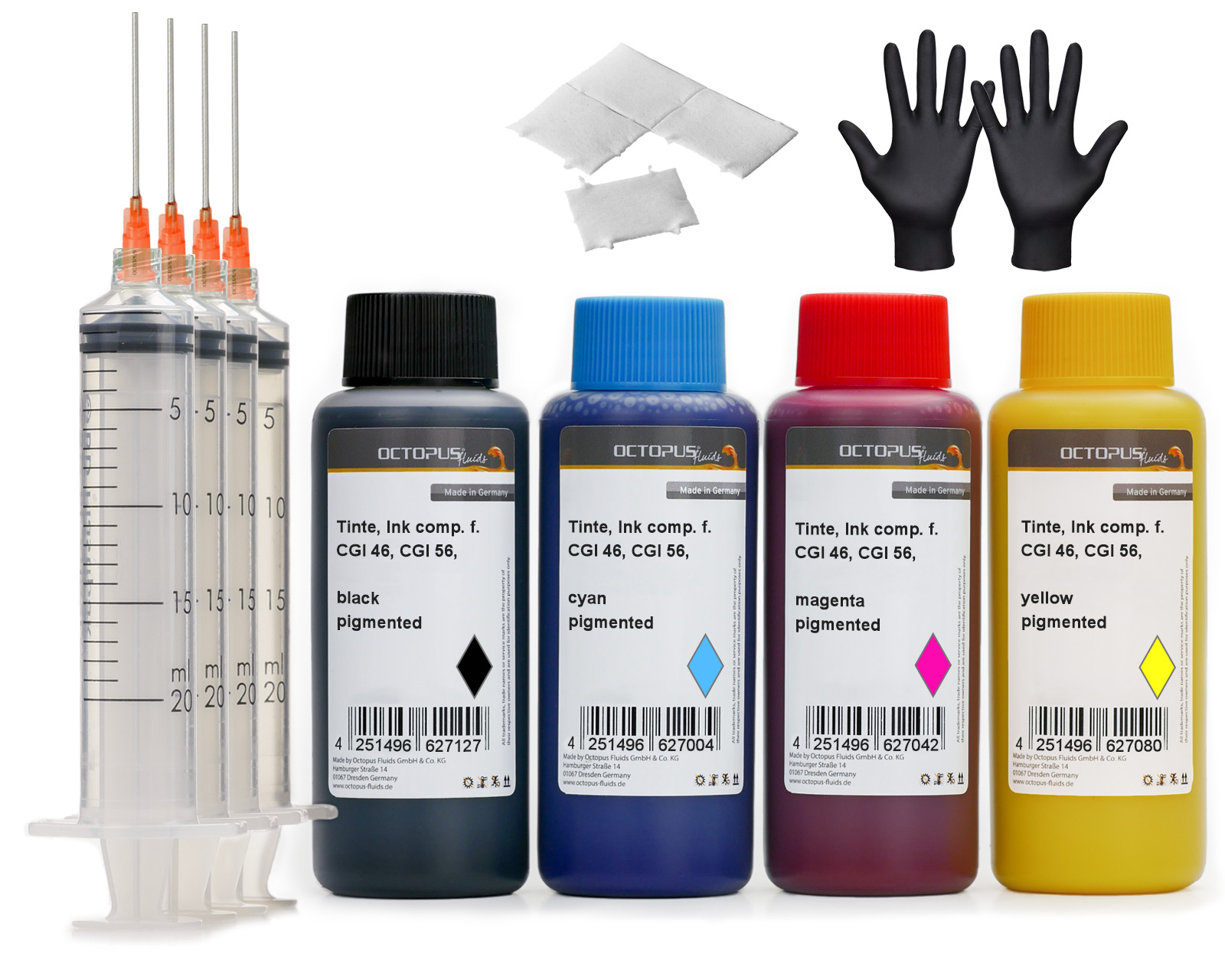 Printer Ink Set for Canon GI 46, GI 56 ink tank
Printer Ink Set for Canon GI 46, GI 56 ink tank
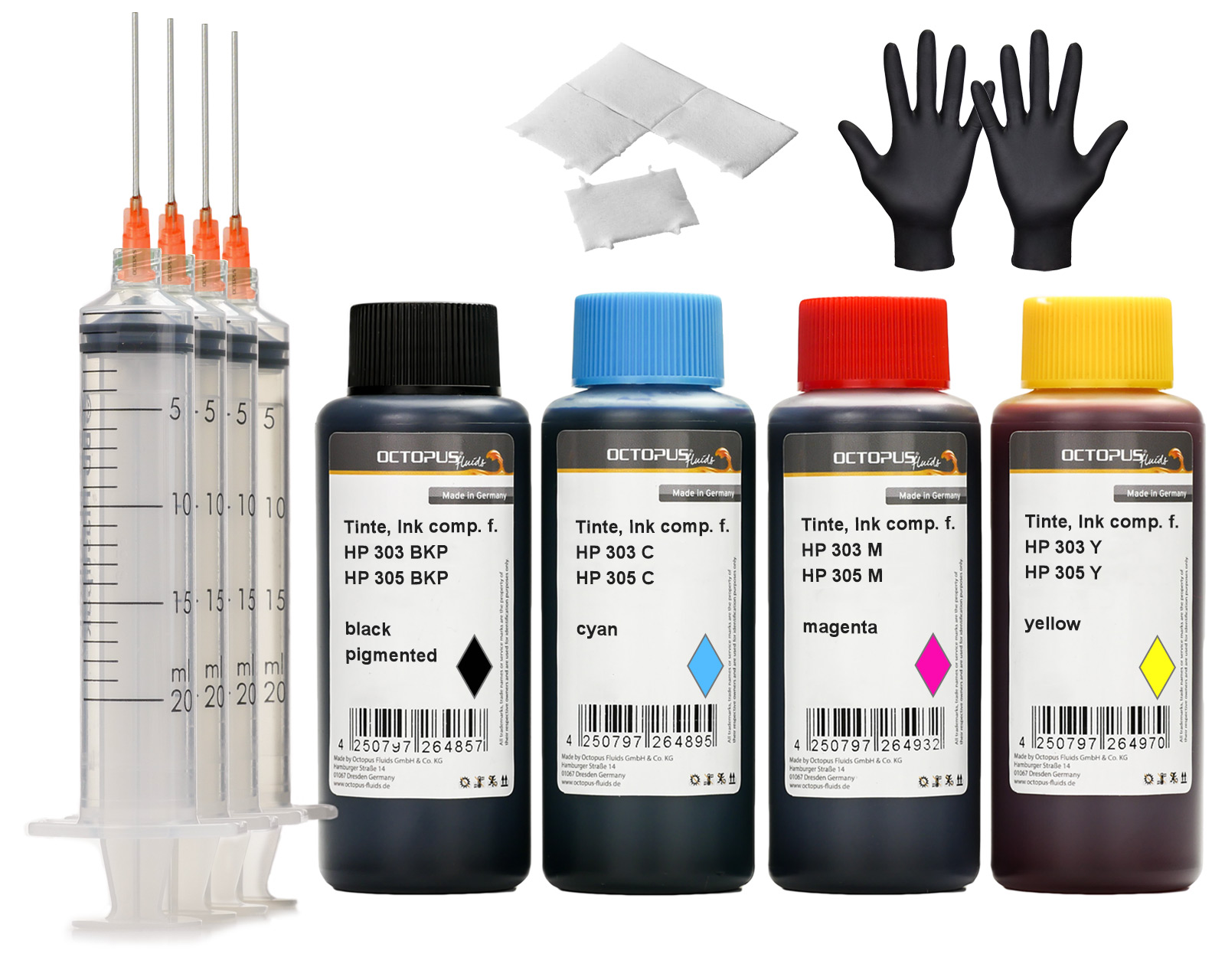 Refill ink set compatible for HP 303 and HP 305 Ink Cartridges, DeskJet, DeskJet Plus, Envy, Envy Pro
Refill ink set compatible for HP 303 and HP 305 Ink Cartridges, DeskJet, DeskJet Plus, Envy, Envy Pro
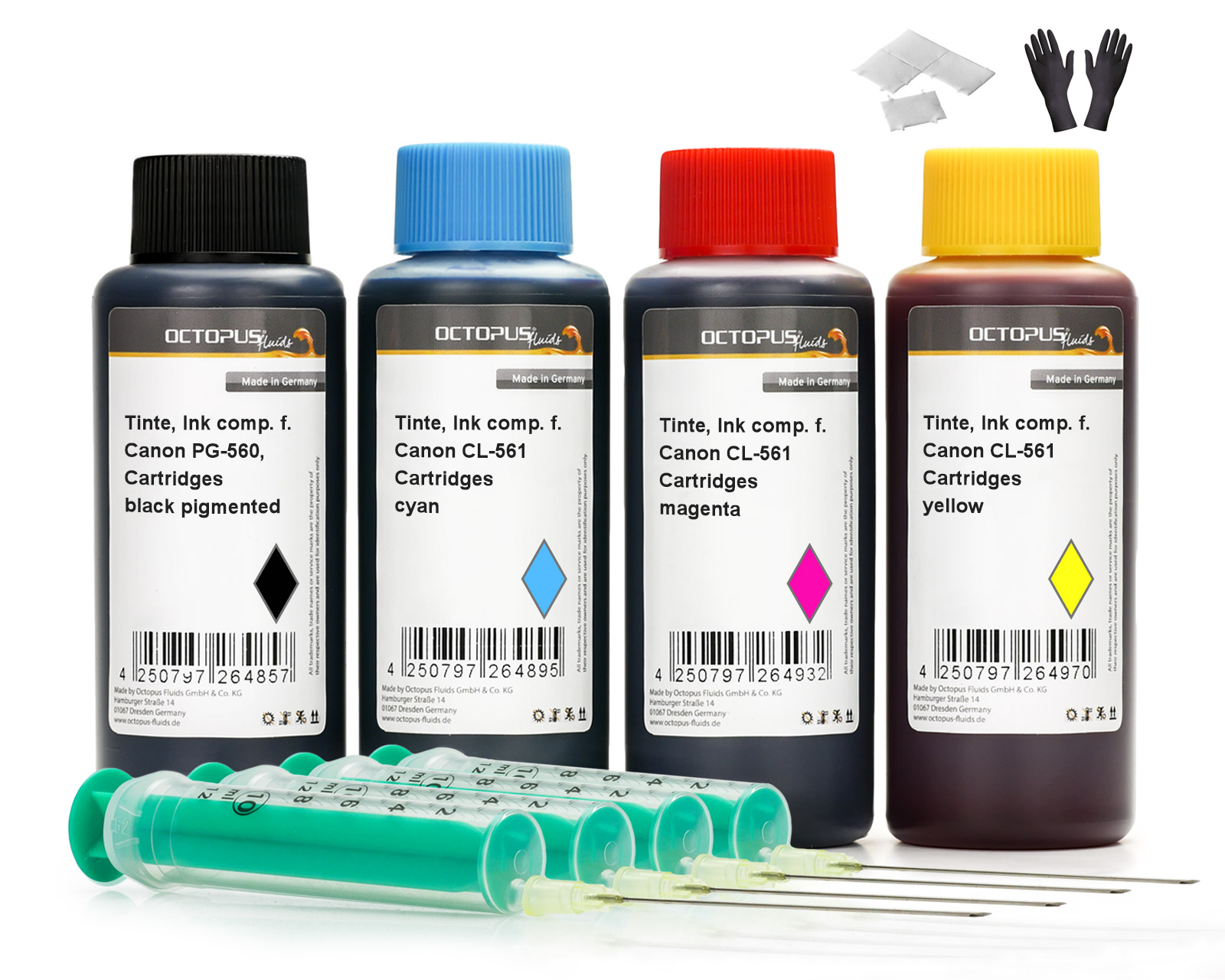 Octopus printer ink set compatible for Canon PG-560, CL-561 ink cartridges, Canon Pixma TS 5300, 7400
Octopus printer ink set compatible for Canon PG-560, CL-561 ink cartridges, Canon Pixma TS 5300, 7400
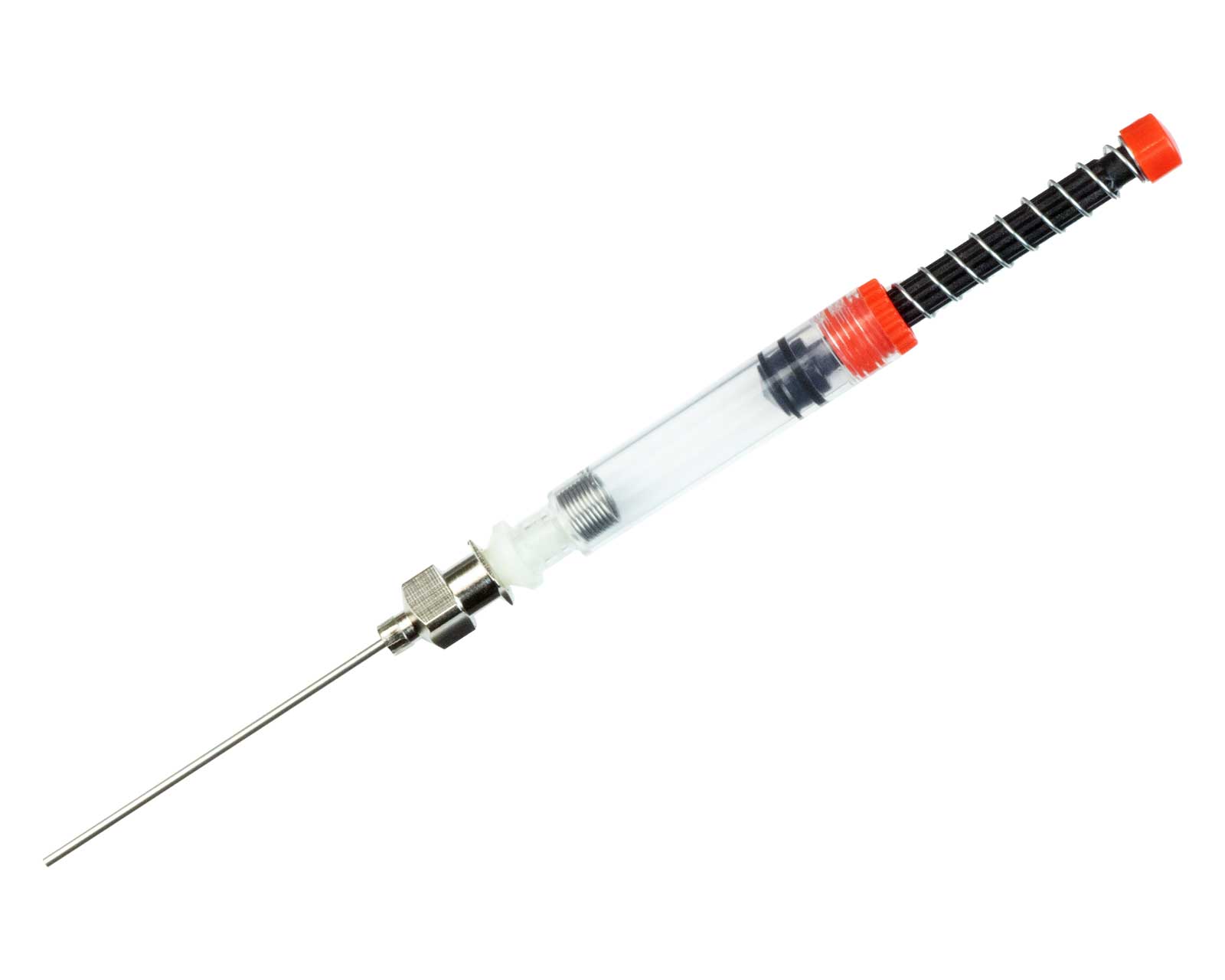 OCTOPUS ink absorber for refilling ink converter and fountain pen cartridge
OCTOPUS ink absorber for refilling ink converter and fountain pen cartridge
 Octopus sales display for presentation of 120 Alcohol Inks or 48 fountain pen inks
Octopus sales display for presentation of 120 Alcohol Inks or 48 fountain pen inks
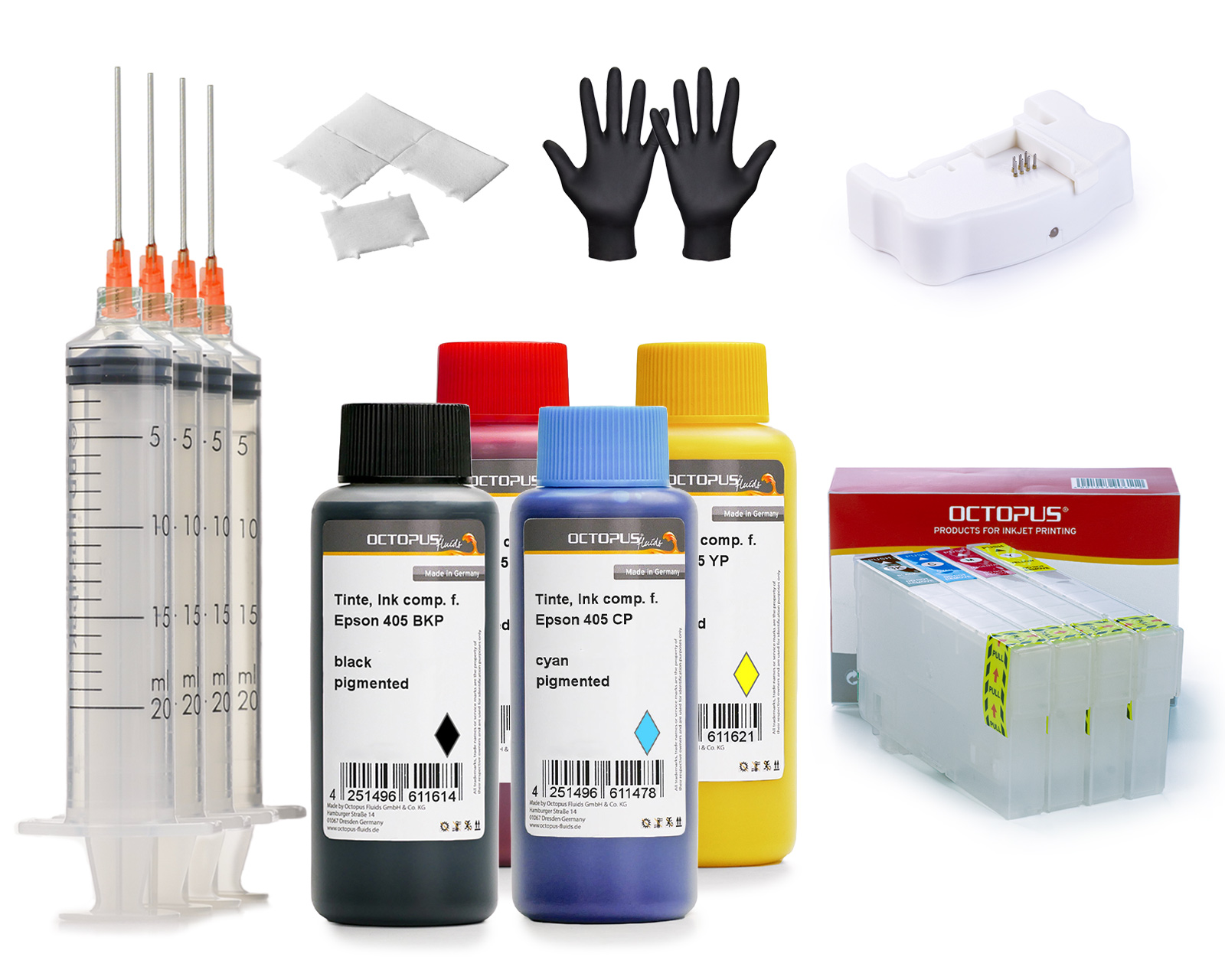 Fill In, QuickFill printer cartridges for Epson 405 with chip resetter and printer ink
Fill In, QuickFill printer cartridges for Epson 405 with chip resetter and printer ink
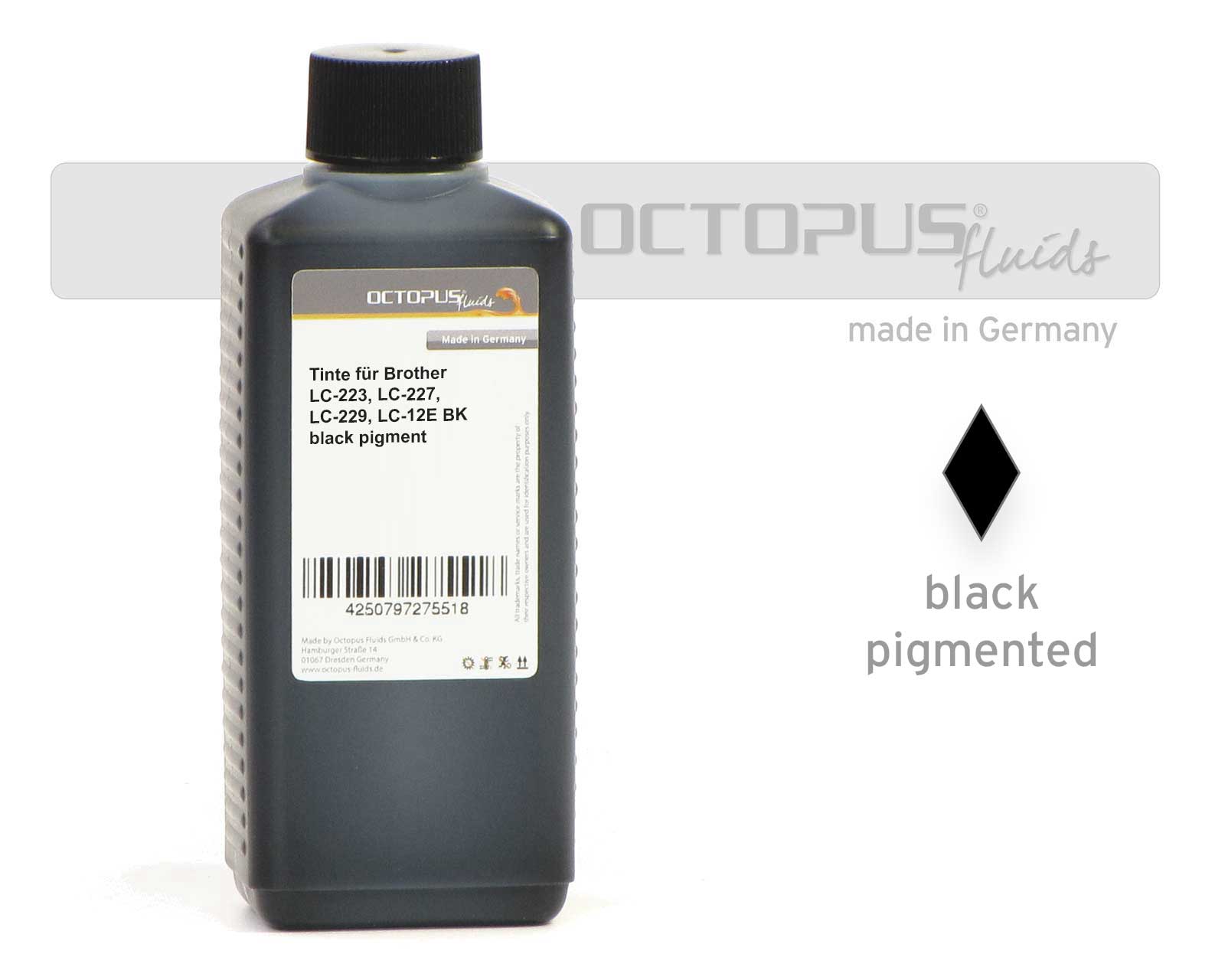 Refill ink comp. with Brother LC-223, LC-227, LC-229, LC-12E black pigmented
Refill ink comp. with Brother LC-223, LC-227, LC-229, LC-12E black pigmented
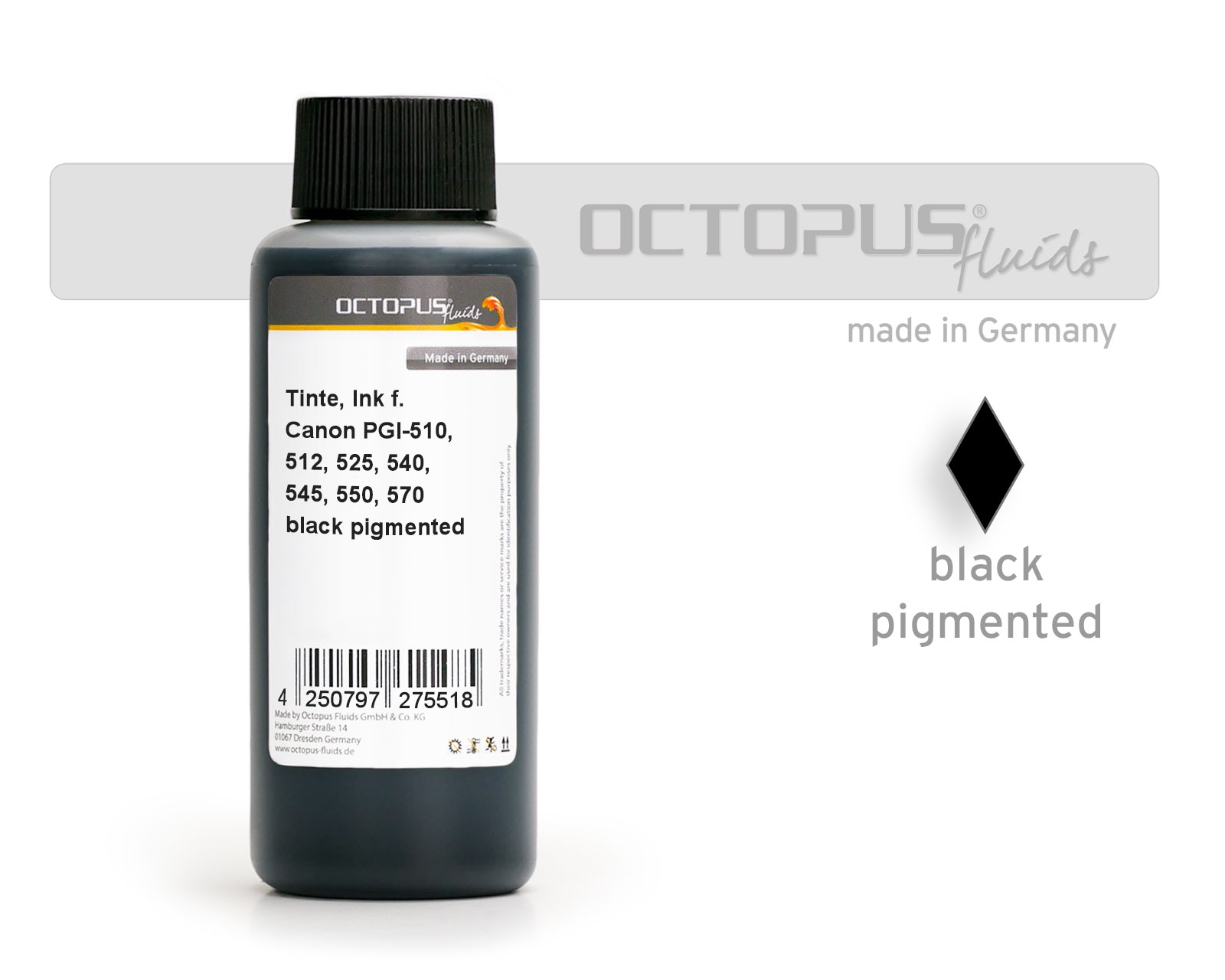 Ink for Canon PGI-525, 550, 555, 570, PG-540, 545, 510, 512 pigm. black
Ink for Canon PGI-525, 550, 555, 570, PG-540, 545, 510, 512 pigm. black
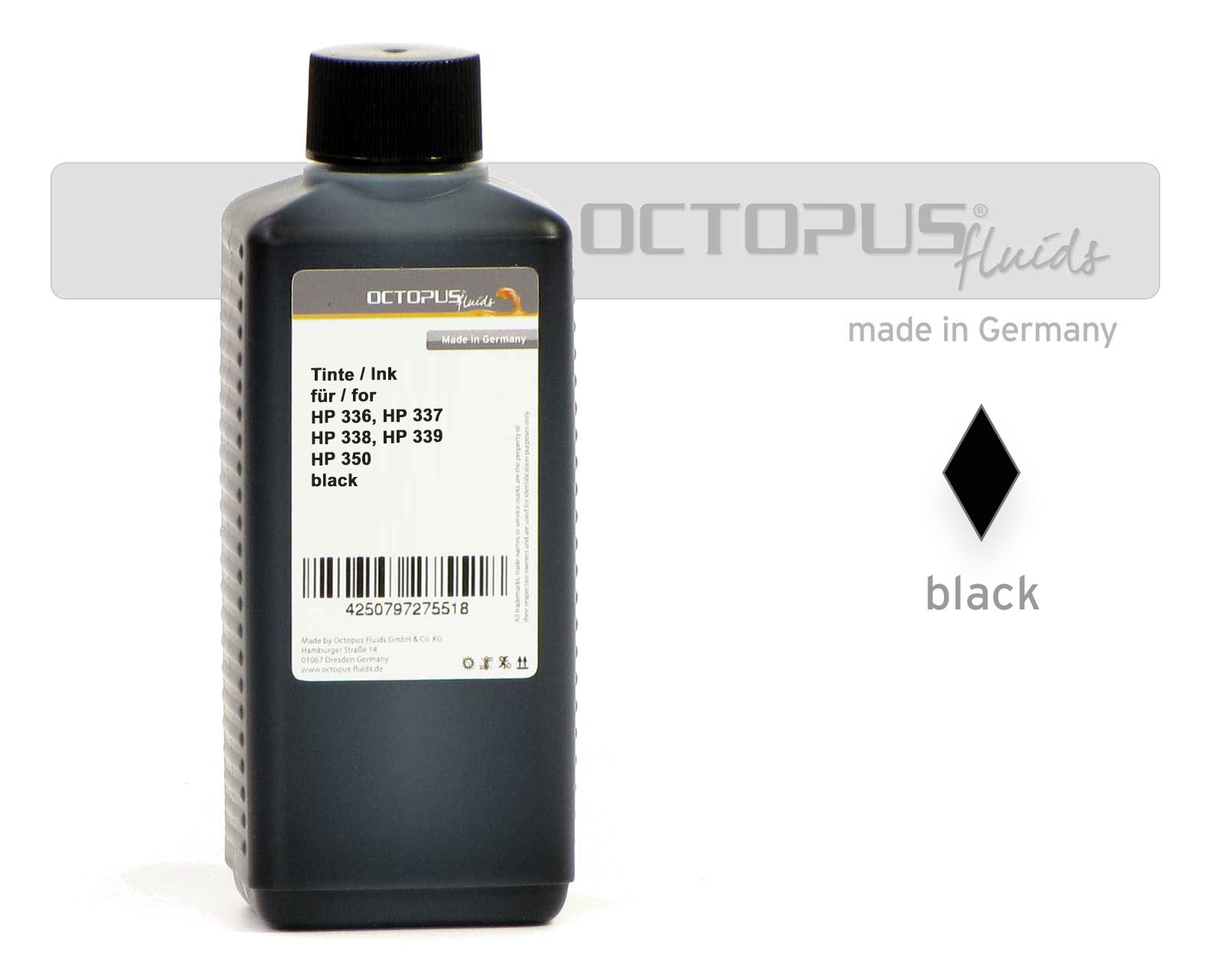 Refill ink compatible for HP 336, 337, 338, 339, 350, 350 XL pigmented black
Refill ink compatible for HP 336, 337, 338, 339, 350, 350 XL pigmented black







